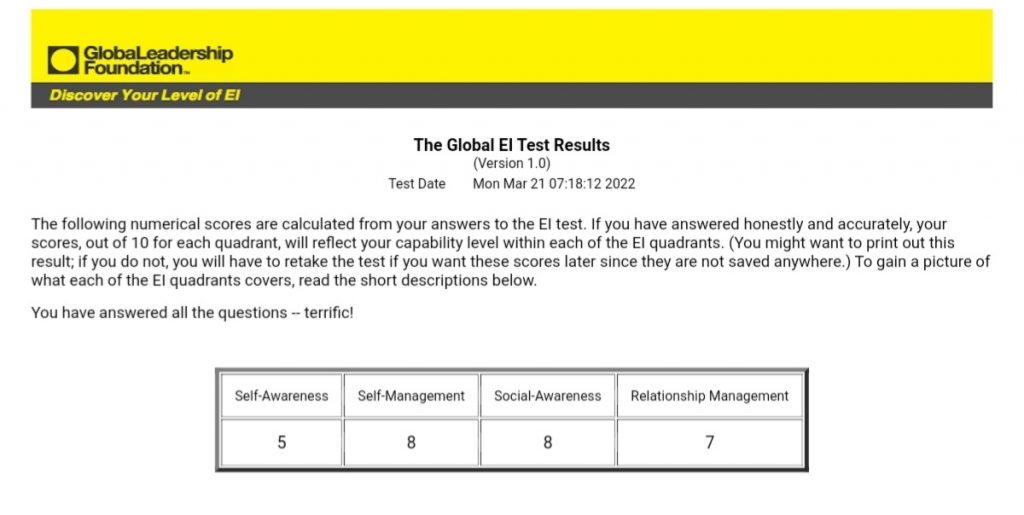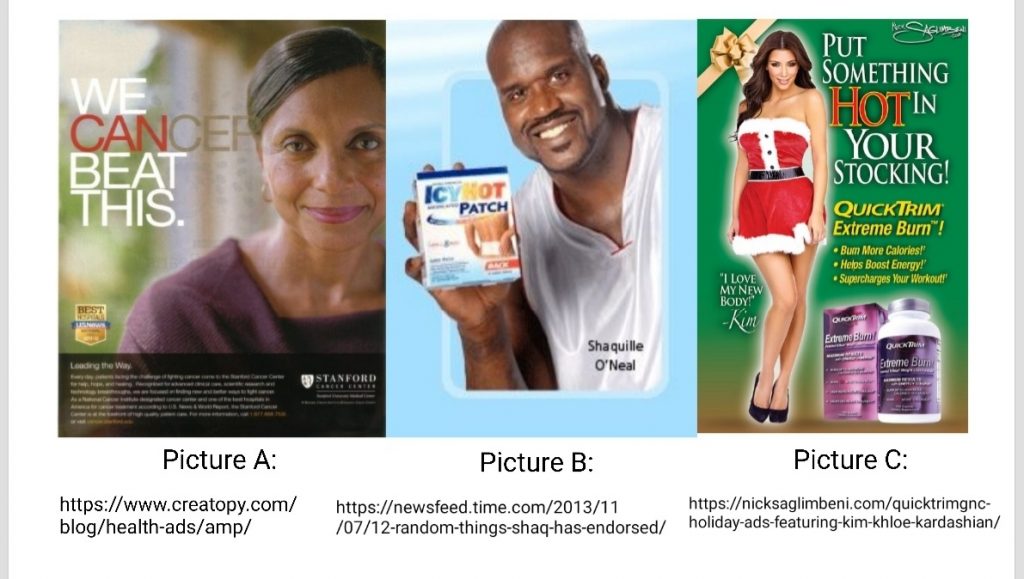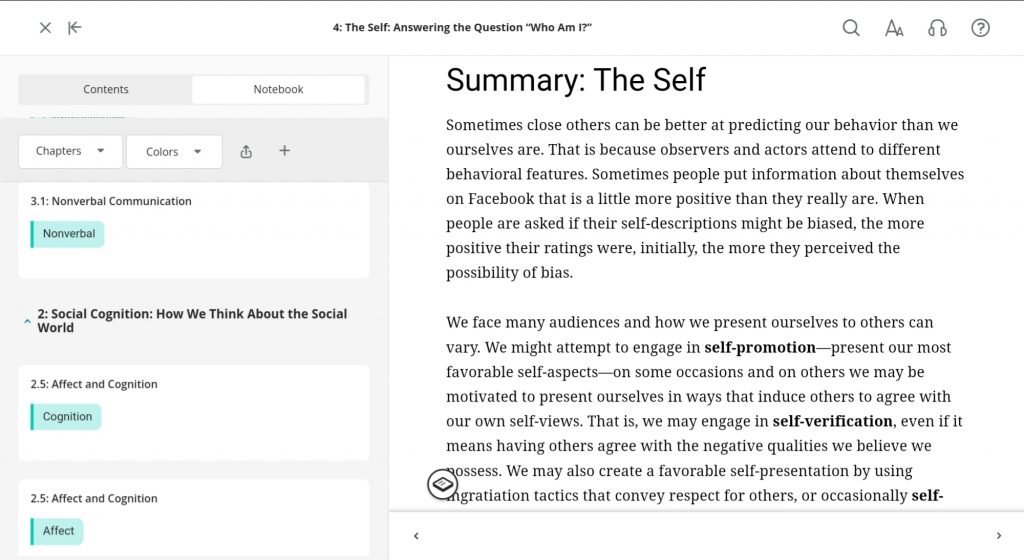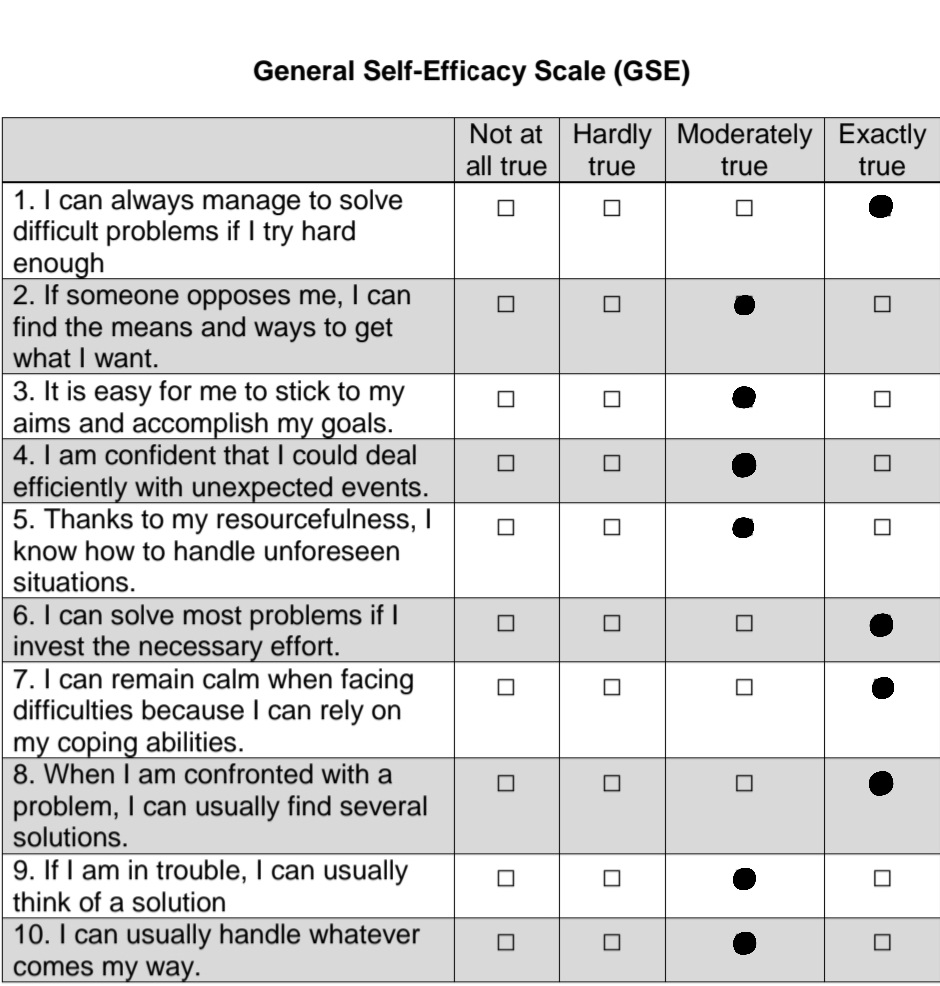Blog post 10:
After reviewing what I wrote back in blog post 1, I feel that my expectations were more than met. For example, course objectives such as discussing the factors that influence our liking for other individuals and that lead to the formation of close relationships as well as discussing the processes through which people perceive and attempt to understand each other, learning how judgments of others are made, what makes someone likeable, what factors make someone likeable to others and how we are perceived were very important to me and I learned more about them than I initially expected too. Each was covered in great detail throughout the modules.
One of the main things I was looking to gain from the course was a strong background in social interaction, since this is at the very core of each topic discussed. I have to say that I gained an amazing view this subject with both what I already knew and what I didn’t. For example, I already knew that certain factors about a person make them more likable than others such as attractiveness and an outgoing personality but I did not know the extent to which similarity plays a part in relationship formation. Likewise, I was surprised by just how strong conformity and obedience can be in various social settings. So much that we will do almost anything to match our peers or follow an authoritative figure. Lastly, I gained valuable insight into the ways we tend to judge others. Discussed early on how we judge other based on how they act and then later factors such as age and race were considered. Hate seems unavoidable and even unbeatable but I was pleased to see that this course established pathways which can be taken to overcome racism, prejudice and even heuristic-based stereotypes. For example, simply being made aware of such mindsets can go far to help lessen their negative effects towards others. And, how we will automatically view outgroups member based on the loose justification that they are not part of our own group. All these topics have made me better understand that we find ourselves in many different types of social situations and that no one right way exists to deal with them. Overall, I loved this class and am so grateful for it as it helped me to overcome my social anxiety through giving me a view of the social world I had never seen before.
My attitude (another major topic I enjoyed studying) towards social psychology was actually rather negative prior to taking this class because I was told that the subject was less applicable, and inferior to, general psychology which pertains to the individual rather than the group. My first psychology teacher told me this and since I had nothing in which to prove or disprove his stance, I accepted his opinion until I could decide for myself. Now that I have taken the course myself, I have to say that my psychology teacher was wrong and not only is social psychology just as applicable as is regular psychology, it may actually be superior to it. General psychology encompasses a general outlook to a variety of aspects of human life while social psychology concentrates on the social influences on the individual only. Social psychology is focused on situations. Social psychologists are interested in the impact that the social environment and group interactions have on attitudes and behaviors. Therefore, I feel that this area of study is perhaps more important than general psychology because humans are social beings in nature and it is basically required for our proper functioning.
If I took the course over again, something I would change is writing about different subjects on my ePortfolio. This may seem like a cop-out but I honestly would have liked to study and then write about more topics than I did. When the class first started, the ePortfolio seemed to be so daunting and I didn’t know where to begin. However, as the class went on, I found every assignment to be better than the next and really started to enjoy them. As such I almost wish I could have done 20 blog posts as opposed to 10. Besides that, nothing else comes to mind which needed changing. My study strategy worked out just fine and I feel that my work over the semester reflects this. As a matter of fact, I feel I was able to growth academically as I tried new study tips this year. For example, I took notes while writing the textbooks, I highlighted areas of interest and even made a digital schedule for assignments. Of all these I had never tried before. Taking these tips into my other classes has already improved my life and will continue to do so going forward, especially in graduate school. The study methods I had developed over Covid-19 were not going to help me anymore and I seriously needed newer and better methods as I go into the higher tier classes.
Besides adopting new strategies to be a better student, a skill that I feel I can bring with me into the professional world is what I learned with regard to the use of, and ability to recognize, nonverbal communication. That is, the way I listen, look, move, and react—tell the person I’m communicating with whether or not I care, if I’m being truthful, and how well they listening. When nonverbal communication matches up with the spoken word, it increases trust, clarity, and rapport. So much about this can affect another topic discussed which was impression formation. Even though it is wrong to base our opinions of others based mostly on first impressions, it happens nonetheless, as was supported by many studies and experiments in our textbook. Therefore, I think having a deep knowledge of nonverbal communication which directly affects our persuasion of others, is extremely important for job interviews and interpersonal skills within my (future) career choice of veterinary medicine.
For the final representative image I chose for this post, I picked one of a plant as it grows from a seeding to a small plant which will eventually become a tree. I know it cliché is compare learning to the growth pattern of a tree, but I picked this image because it is how I feel. At the beginning of this class I felt that my knowledge of social psychology was comparable to a seed which has now grown into a small, yet healthy plant. And, note the plant is not yet a full grown tree because there is much left to learn.

Blog post 9:
First and perhaps most importantly, I learned much about the concept of social perception. From really diving into the many social cues we use everyday to make judgments about social roles, rules, relationships, context, or the characteristics of others, I think a clearer understanding of these will help me go further into the workforce one day. For example, for my first Top Artifact, I chose to upload was concerned with self-enhancement as it pertained to various social settings. I selected this artifact because it interested me the most due to past experience. Last year in technical writing, I was tasked to write a summary about what qualities were best to have for an interview and then what questions are best as the interviewer such as “What can you bring to the company” and “Where do you see yourself in 5-10 years in our establishment”. I found that assignment very engaging because I felt that it was helping me to establish myself professionally as I created scenarios in which I was being interviewed for a graduate school application and/or future place of work. With real upcoming graduate school interviews and work interviews, I need have a strong background in social perception as to best present myself and be prepared for a variety of social contexts. This artifact expanded greatly on the concept for me and I really appreciate that an ePortfolio assignment existed to help students be prepared for success with the world beyond academics. Additionally, I’m always happy to have crossovers between classes as they continue to build upon each other.
Next, another topic from the class which piqued my interest above most others was the concept of the self. This is a topic which can be found throughout the course but an area in which it was centrally focused was Assignment 2 and its subsequent takeaway which I evaluate here. I was tasked to look at a representative group of photos of myself that I think best reflect who I am. The point is to find photos which display me as I myself and what I believe others see in me. This takeaway represented an amazing point about the concept of self which I had never considered before. That is, the idea which we hold true that we see ourselves as who we are, fundamentally and think that we know ourselves better than anyone else possibly ever could. What is so profound about Assignment takeaway 2 is that I was, in effect, the observer rather than the actor and through that perspective I was able to discover aspects of own personality that I previously was unaware of. Taking this a step further, when I completed blog post 7, wherein I was tasked to define emotional intelligence and then take an online test to determine my own level of it. When I took the test straightforward, as myself in the role of actor, my results did not seem to match how I perceive myself to be. These were the results which I posted on my site. Then, however, on my own, to test the concept of the self, I tried the test again but this time, took the role of an observer. My results on the same test were higher and more in line with what I would consider to best reflect my personal attributes. Therefore, I would say that in order to best know ourselves, we need to take the place of someone else and gain an outside perspective.
While the concept of the self applies to many topics discussed within the class, I think it relates best to chapter 3 from the PSYC-304 textbook which was concerned primarily with nonverbal communication, attribution and impression formation. In many examples from the book, it described certain facial cues which denote deception, basic emotions and even hidden intentions. It described how we can derive feelings and some thoughts based on discrete, visual aspects of a person rather than, obvious, verbal ones. I feel this relates because from the pictures of myself I used for the assignment, and its discussion from the takeaway. I could see certain emotions and feelings based on what I was doing or how I looked (at the time) in the photos. This is part of what helped me to understand myself as an observer rather than actor. Before reading the textbook, I did not appreciate how much nonverbal communication can play a role in our outward appearance even if we do not know it.
Finally, another aspect from the course material which I was heavily engaged with was attitude in relation to techniques and sources of persuasion. It was interesting to analyze several advertisements in both blog post 5 and 6. In blog post 5, I was tasked to evaluate whether or not a given ad was credible, not credible and attractive based on factors which helped to promote the message of the ad to a certain audience. Then in blog post 6, I was tasked to find deeper themes in advertisements which serve to objectify women while still attempting to appeal to a given audience. I’ve always enjoyed analyzing content from the mainstream media and sort of pick it apart to derive meanings based when it was released, the context, audience and purpose, for example. As such, I decided to continue writing about subject of persuasion choosing Top Artifact 2 as posting material recently. There I was tasked to find data from dating sites and determine what, on average, men were looking for in a partner, and what women were looking for in a partner. I enjoyed this Artifact as I put great effort into details such as basing my conclusions on 3 separate age groups and including factors as such sexual orientation and maturity levels. The forces which drive what makes us pay attention to something or not, how we interpret those forces and what we control we may have over them is such a fascinating area of research for me. From simple aesthetic value to evolutionary instinct, the ways in which we view the world when making decisions is so broad and diverse. As mentioned before in a past blog post, I was exposed to persuasion analysis in an English class a few years ago and my interest has not diminished since. Therefore, I was pleased and surprised to have revisited the topic so many times here in this class.
The image to accompany this post which helps to represent my organizational process is a simple flow chart. As I reviewed my ePortfolio and wrote about what I had learned the most about, I thought of each concept in a mental flow chart with each idea flowing into the next. Psychology, much like most scientific disciplines, builds upon itself with each study, each theory, each experiment and it all adds up a to single whole which is made better and better every time something new is brought in and the entire field benefits. Therefore, it was somewhat difficult to narrow it down to three concepts and even those that I chose still apply to other discussed throughout the course.

Blog post 8:

After reading the provided article, I thought the link between psychology and evolution, mentioned in said article, was truly fascinating. As an avid lover of both, I’m glad to see their respective link acknowledged and used to help explain how and why people can act. I feel that psychology and evolution share a deep bond and one can sort of fill in the gaps for the other. Basically, as it pertains to this article, man’s basic instinct, or drive for sex, as purposed by the article, stems from early civilization’s goal of preserving itself out of necessity which later become something more for pleasure.
Besides that, I felt that the examples made for both men and women seemed to be a little stereotypical and somewhat generalized, perhaps for ease of narrative. I think while most men and most women would fit well into their roles of “pairing widely” and “pairing wisely” respectively, the article could have benefitted from going beyond such easy definitions and would be more applicable overall. However, it did mention a point relevant to each way that the opposite genders manipulate relationships to get what they want. That is, how men might employ their emotional abilities to get sex and from women how women might use their sexual abilities to get what they want emotionally from men.
As represented by image A, a way in which a man might upset a woman, as I have observed in real life, is him not listening to or flat out ignoring her. This certainly leads to the “sexual conflict” described in the article as this kind of behavior leads to interests definitely clashing. This is probably most likely to occur within the second phase of the mating process called “After a relationship has formed”. This is because in the first stage, the man is trying to his best to appear as close to the perfect mate as possible so he can get what he wants. Afterwards, though, speaking in instinctual terms, once he has successfully mated, he no longer has to try as hard for that goal again. Basically, he cares, or listens, until he doesn’t have or have too as much. This is one of the example of sexual conflict could possibly dissolve a relationship as in stage 3 of the mating process.
Now, as represented by image B, a way in which a woman might upset a man is the feeling that she is only using him to get what she wants. While less frequently observed than the first example, I have seen this occur as well. Because society’s view of a man is as the provider, and often the sole provider, some woman might take this too far and perhaps in exchange for sex, they might ask more than is necessary of their man and “take them to the bank” and it can be called. It is common for women to seek men with the ability to provide, as is rooted in evolutionary history because the women would stay with the young. However, modern life has much more to offer now than simple survival and if a man can afford such luxuries, a woman may jump at the chance. As shown in the picture above, a man may feel that his money is the only thing a woman would want from him. And depending on the man, it may be hurtful to know. This could take place within the first and/or second stage of the process as it could be what the relationship itself is based on.
Blog post 7:
One of the most important parts of emotional intelligence is having, and using the ability to self-regulate. As emotional intelligence is the ability to perceive, use, understand, manage, and handle emotions, some mechanism of control must be established and self regulation exists for this purpose. Therefore, a definitive relationship exists between the two. To expand upon this, self regulation is the ability to control or redirect disruptive impulses and moods and the propensity to suspend judgment and think before acting.
Self regulation is not masking or hiding the presence of emotions, but rather regulates the degree to which emotions are expressed and is what allows one to recognize and control said emotions appropriately. This is especially important in situations in where thoughts and the corresponding emotion(s) must be analyzed carefully before they are acted upon. If a decision is made based upon a strong emotion felt at the time, it may be the wrong action to take because such rash thinking is often without reason and what is truly felt is not expressed. An important takeaway from this relationship is that emotions only control us only if we let them do so.
To me personally, emotional intelligence is an ability that may seem innate, but I believe it is like any other kind of intelligence in that it must be learned gradually, mastered and used regularly so it is not lost to memory. Additionally, self regulation, as it pertains to emotions is so fundamental to human cognition that I am genuinely surprised that they are considered two halves rather than a whole. To me, the ability to recognize our emotions, as well as other’s emotions, and manage them appropriately, requires that self regulation must be incorporated for proper functioning. How can we truly understand our own emotions if we do not have some method of keeping them in check. That is, a constant flow of regulation.
For my own emotional intelligence, I think I display it in how little it takes for me to genuinely care about someone. For example, when I make a friend out of someone, their problems become my problems and I do all that I can to help them. I have great empathy for others and always attempt to see the issue from their perspective regardless of how I may feel towards it. My main concern towards my emotional intelligence is that I generally fail to recognize my own emotional state at any given time. I am well adapted to recognizing feelings and thoughts in others, but cannot see them as easily, if at all, in myself. I have throughout my life strived to be unselfish and my inability to properly organize my emotions may a consequence of this. I am only truly self aware of my emotions as to how they might affect others in a given situation.
To extrapolate on this, I took an emotional intelligence test (here referred to as EI rather than EQ). My results reflect my strong desire to manage my emotions (with a score of 8/10 for this category) though not in myself, but towards others as displayed by rather low 5/10 score for self-awareness. As such, my social-awareness score was high at 8/10 which I greatly agree with. Lastly, relationship management, my score being 7/10, my lowest score of the 4 is definitely something I could improve upon as I branch out into new relationships which have the potential to last. Screenshot of my results are attached below.

Blog post 6:

After watching the providing the Ted Talk, I immediately agreed with the sentiment that advertising is hurtful not only to women, but to everyone at some level of society. Prior to watching the video, I had already seen many of the ads from the presentation and others which sadly use sex, idealism and even racism to sell products. After doing research for the last Blog post and studying many methods of advertising extensively in a previous English class, this Ted Talk did not necessarily give me a new understand of gender representation in ads. However, I did learn a few things about how sex and sex appeal is used to reach younger audiences which I found to be horrifying especially in the ads with babies and very young children. I never really thought that media companies would be shameless enough to use children in such a manner. The kids being used in these ads probably don’t even know what they’re doing or what it represents. It’s truly vile of these companies.
To relate to the provided Ted Talk by Jean Kilbourne, I found 5 different advertisements which correspond to points made in the video.
The first image (Picture A) I chose to use is one from American Apparel which uses sex as the main draw. This is much like what was shown in the Ted Talk where ads use sex to draw attention to it and in the process dehumanize women. The ad is clearly selling clothes but it portrays the man in a powerful positon over the woman. As stated in the Ted Talk, these types of ads don’t cause the problem of sexism, but they certainly add to it. This particular ad is harmful because it displays a woman in a vulnerable position relative to the man and adds to the notion that women are inferior which harms the development and self-esteem of women. Additionally, this perfectly illustrates the issue mentioned in the Ted Talk about women being dismembered in advertising. Here, only the woman’s legs are visible and the rest of her doesn’t matter. This is very dehumanizing suggesting that only certain parts of a woman are useful or attractive at any given time instead of the whole being.
Next is Picture B which is an ad from Samsung that perfectly displays the idea of unrealistic perfection in advertising discussed in the Ted Talk. The ad says that “true beauty is curved”. This is of course referring to the design of SF notebook but it openly acknowledges the fact that the world has unrealistic beauty standards of which very few, of any are actually capable of obtaining. This tacitly says that their product is perfect because it matches what the ideal of beauty is to the population at large. This ad is a perfect example of how advertising uses direct sex appeal. Notice how the actual product being sold, that is the Samsung SF notebook, is shown in the bottom right corner while the naked woman is prominently displayed front and center. The woman is the draw and the ad makes no qualms about it. This brings attention to the ad because the woman’s beauty is being exploited for the purpose of selling a new piece of technology.
While remaining on the topic of using sex to sell products, and as disgusting as it may be, food was also included among the ads shown in the Ted Talk. Picture C displays an Arby’s ad which uses burgers instead of breasts but still represent a woman’s chest. When it reads, “We’re about to reveal something you’ll really droll over”, it uses sex appeal to make an obvious implication about breasts being desirable and therefore so must be the burgers. As men “droll” over women’s physical beauty, so will they droll over the new burgers being promoted. “Sexy” ads are so common nowadays that it is almost easier to recognize the image of a woman cupping her breasts than it is to recognize the actual burgers.
Onto the theme of portraying women as nothing more than sex objects, Picture D shows an ad that is a sad representation of this aspect of advertising. Keep in mind that this is an ad for used cars yet not a one can be seen anywhere on the ad itself. The idea behind the ad is that used car are not “virgins” because they have been driven before and are no longer brand-new. The ad uses an attractive woman to represents one of their cars and says “you know you’re not the first”. This insinuates that the woman being shown is no longer a virgin, like a used car, but because of her beauty, she is still valued. This adds to the notion of women being treated as sex objects waiting to be used by the next owner which is plain disgusting and so disrespectful to women. Furthermore, it establishes the idea that a woman is only desirable and worthy of attention if she is still beautiful and nothing more about her character is even considered.
Lastly, returning to what shocked me in the video, which is the sexualizing of children in advertising, I picked an ad for Huggies diapers. Picture E features a toddler hardly old enough to walk on their own, posing like a model wearing new denim-printed diapers akin to a pair of Daisy Dukes. This is intensely sexualized and could even be considered pornographic which is just wrong. Even if promoting the diaper design as “sexy” was not the intent of the ad, if a 20-year-old was put in the same position, then it would absolutely be sexual in nature. Therefore, the ad is sexual and children should not be promoted in this way. Much like what was said in the Ted Talk, while it doesn’t create the problem of viewing even children as sex objects to exploit, it certainly adds to it. It teaches children from an early age that women need to be sexy to be accepted and nothing more is expected of them. Likewise, it teaches boys to grow up viewing females as sex objects because they grow up in a culture which used sex to sell products to all age demographics even when it was clearly inappropriate to do so.
Blog post 5:

Picture A is an advertisement for the Stanford Cancer Center which serves to advance the understanding and treatment of cancer through a multidisciplinary, integrated and collaborative community effort of physicians and scientists. The ad specifically mentions that according to U.S. News and World Report, the Stanford Cancer Center is one of the best hospitals for cancer treatment and at the forefront of finding new treatments through continued research. And as of this writing, from 2012 to 2022, Stanford Health Care’s national rankings rose in eight specialties: cancer, which rocketed from No. 21 to No. 12; cardiology and heart surgery; ear, nose and throat; gastroenterology and gastrointestinal surgery; geriatrics; gynecology; pulmonology and lung surgery; and urology. For the seventh year in a row Stanford Health Care has made the honor roll by the U.S. News and World Report. Being backed by such a powerful media company shows credibility because out of the many cancer institutions nationwide, only 50 are considered each year for this national ranking. Therefore, to be recognized by U.S. News and World Report, and at #12 out of 50, not only shows that they are a professional and effective institution, it also means they might be a better consideration to the person viewing the ad as opposed to seeking treatment elsewhere.
Additionally, the wording of the ad conveys a subtle level of trustworthiness. In the word “cancer”, the first 3 letters are a bright red color to spell “can” in “We can beat this” while the last 3 letters are grayed out almost to be the point of being unable to see. This perhaps represents to someone that their cancer will fade in such the same way; that they can beat the disease and success (remission) is more likely at their institution when compared to another.
Picture B is an advertisement which shows Shaquille O’Neal promoting IcyHot pain relief patches. This ad is not credible because it is not only using a famed sports icon, but he is also very popular for his frequent commercial appearances. People trust what is familiar to them so having Shaq in the ad makes people feel likely to try it because they already know and love Shaq. And Shaq has a stake in it as well since now the IcyHot company has teamed up with the Shaquille O’Neal Foundation. Before he was just their main promoter, but now Shaq plays a much bigger role in the success of the brand. It doesn’t matter if he actually uses the patches or not, the main goal is to use his icon status to encourage other people to buy and use them to keep the profits margins high for both Shaq and the IcyHot brand. This is why the ad is not credible; it doesn’t even mention the effective of the patches, but it has Shaq so it must be worth buying. (Don’t get me wrong, I love Shaq too but even I would need some more convincing before making the purchase myself)
Picture C is an attractive ad, obviously. This works in much the way that the last ad does. That it is, an icon is being used to sell something but, in this case, Kim Kardashian’s beauty is being employed rather Shaq’s sports career in the last example. This ad appeals to people because Kim Kardashian in this picture represents what the perfect female body is supposed to look like, or at least what most think prefect to be. And since this is an advertisement for diet pills, it is also tacitly implying that anyone who takes them will achieve a figure much like Kim’s in the picture. This is further stated by the fact that it includes a “quote” from Kim Kardashian saying she loves her new body. This implies she took the pills herself and her “new body” is the result. This however, is most likely not the truth given how much of her “perfect figure” can be attributed to external factors completely unrelated to the pills such as plastic surgery or even simple Photoshop in post-production prior to print. The ad appeals to people because they are captured by her beauty and wish the same for themselves. This is how these types of ads work and it is usually effective especially in cases such as this one where the issue is about weight which many people suffer with. While I have never particularly found Kim Kardashian attractive, I can see the appeal in the ad and how it serves to influence those who do find her appealing. Everyone wants to be attractive to others and advertisements take full advantage of this.
Blog post 4:
Upon reviewing my first exam score for PSYC-304, I discovered that I did very well. However, for anything I missed or more or less had to guesstimate on, I reviewed those questions to understand why I got them wrong or correct and from this learned how the testing process works in the class. For example, many of the questions could have had multiple correct answers but the wording of each one was critical to its corresponding answer.
From the exam feedback, I have learned that I will need to pay much more attention to the wording of all exam questions if I am to do well on the next one. Preparation for exam one involved checking my notes taken when reading the PSYC-304 textbook many times to test myself for comprehension. Additionally, I read and re-read highlighted parts of the textbook I had saved in a reading list such as the key points and whenever a term was defined in its own text box. The provided review sheet was very overwhelming (at first) so I did indeed space it out throughout the week prior to the exam and it helped a lot in the end.
After reviewing the exam one results, I feel I can develop test taking strategies because I know how I will be tested on now. Exam formats can be very different from class to class so it is always easier after the first test to learn each format. It is nice being to review my exam results because it if I don’t see my results, then I can’t learn anything I missed and nobody benefits. I want to learn as much as I possibly can on this class and this makes for an excellent start.
Going forward, I will keep in the back of my that even the smallest bit of knowledge could be tested on so I won’t ignore anything. For the image I wanted to include in this post, I chose a snapshot of some of the highlights I had saved for later review in the textbook. I couldn’t fit them all into one shot because I used a mobile device for the majority of my reading and/or writing. However, this illustrates that I found certain parts of the book which I thought required further investigation.

Blog post 3:
The “Soul Meets Body” article was a very interesting read as it explained what effects on relationship musical bonds can have. I was surprised to find that musical tastes do not necessarily indicate similar personalities and traits, but rather similar values and ideals. Although this does make sense since we tend to favor to songs that correlate with our views of life and attitudes regarding certain aspects of it. I have experienced this with a friend of mine. She talked about music all the time and it just so happened that we shared many musical interests across a wide variety of genres. Upon further investigation into our likes and dislikes, it turned out that we shared many of the same values, ideals and beliefs about the world around us. For example, we both love philosophy and finding hidden meanings in songs so we both sought music that had these underlying themes such as “American Pie” by Don Mclean, “Man in Black” by Johnny Cash and “The Message” by The Furious Five and Grandmaster Flash. While I didn’t give it much thought at the time, I can see looking back that many of the songs we both liked deeply reflected our shared goals and interests.
For the half a dozen songs that came to mind for this post, I came up with “You Say Run” by Yuki Hayashi, “We Belong” by Pat Benatar, “Bed of Roses” by the Statler Brothers, “American Pie” by Don Mclean (again), “Like a Surgeon” by “Weird Al” Yankovic and “Heat of The Moment” by Asia.
To begin with, I chose the famous theme song from “My Hero Academia” because not only do I like the series, but so does my brother. He loves the show way more than I do and he plays “You Say Run” all the time and even used it as a alarm clock a few years back. I can’t help but associate the song with him which is nice because as we no longer live together, I can still have something to remember him by even when he’s not around anymore.
I chose “We Belong” by Pat Benatar because it was the song of my friend mentioned earlier and I. We picked the song as ours because it beautifully illustrates that while relationships can be rewarding, they can also be painful and sometimes seem to be meaningless. For example, the lines, “We belong to the light, we belong to the thunder We belong to the sound of the words we’ve both fallen under Whatever we deny or embrace for worse or for better We belong, we belong, we belong together” represents that “thunder” is unavoidable in relationships but nevertheless some people are just meant to be together despite these hardships.
I chose “Bed of Roses” by the Statler Brothers because it was featured in a video game I loved and from it I found their music. This song made the Statler Brothers a country staple in 1970 at a time when that type of music was quickly fading from the spotlight. The song is about a “scarlet woman” called Rose who, in contrast to the Christian townspeople who shun the teenage narrator in his time of need, takes him in. The message couldn’t be spelt out in so many words, but it clearly points at the hypocrisy of supposedly righteous people who criticize the lives of others while failing to help their fellow man. I find this enlightening because it teaches that we can say we follow God’s teachings but saying and actually doing are not the same thing. I associate this song with Staunton, Virginia where the Statler Brothers were formed. I went there on a vacation some time ago and actually two of the band members (who are actually brothers) which is something I’ll never forget because I had never met any musical celebrities face-to-face at that point and haven’t since.
I chose “American Pie” by Don Mclean because it is my oldest brother’s favorite song. When I was little, he would actually sing it to me and explain to me the history behind it, being the death of Buddy Holly and Ritchie Valens in the plane accident that is known as “The day the music died”. He loves talking up a storm and since the song is so long, he could derive plenty of material from the lyrics to drone on about. I didn’t mind though because it was nice to see him enjoy something so much.
I chose “Like a Surgeon” by “Weird Al” Yankovic which is of course a parody of Madonna’s “Like a Virgin”. I associate this song with my mom because she loved it as she was a surgeon herself. The music video takes places inside a hospital and it pokes fun at doctors such as extreme scrubbing up, using various yard tools in place of surgical instruments and caring only about money rather than the patient’s life while also mimicking the original “Like a Virgin” music video. I used to watch it with her during the early days of YouTube in 2006 and do every now and again currently. Being a doctor herself, the humor was not lost on her and she actually appreciated it because it made such a serious field of work into something enjoyable.
Lastly, I chose “Heat of The Moment” by Asia because it is actually my favorite song. I had been recommended the song many times on YouTube but I ignored it for a long time. One day I finally clicked on it and upon hearing it, I knew it was my favorite song. If the concept of love at first sight can extend to music, that is exactly what I experienced with “Heat of The Moment”. As explained by John Wetton, the singer/song writer behind it, the song is an apology for letting things get out of hands while being caught up in the heat of the moment. This is very clear as the first line is “I never meant to be so bad to you”. To me the song represents my personal outlook on life as I am a very careful person who always tries to consider consequences. It’s hard to think about the future when we’re caught up in the excitement and thrill of the present and the song represents that time will come back to bite us if we only make the cheap and easy choices in life because they seem right at the time.
Since no one I mentioned wanted to have their picture on my ePortfolio, I decided to use a picture I found of one of the first concerts where Asia preformed “Heat of The Moment” as my image for this post. I love this song so much and wish I could have been there to see them play live.

Blog post 2:
Though not always, I now believe myself to be a very devoted student. In high school I was never really challenged to the point of actually testing my abilities in an academic setting. Therefore, when I began attending college, I felt completely unprepared and terribly afraid of the new responsibilities that were now expected of me. However, upon completing my first semester, and doing extremely well, I discovered that I was actually very prepared for my transition into college life. Ever since my first semester, I have always been able to meet the demands of my classes. In every course during my first year, all my teachers kept telling me “This isn’t high school anymore”. While that turned out to be true, as college is certainly more difficult than high school, I never let that stop me from continuing my academic success.
I currently have a high level of confidence in my abilities as a student because into every single class I bring with me the mentality that failure is not an option and it has seen me through very well so far. I feel that 90% of college is determination and the other 10% is the knowledge of how to use said determination. And surprisingly enough, being a biology major has allowed me to experience a wide range of different classes and I have been very fortunate to test my abilities over many subjects. However, I am not saying that I am an ideal student. I fully recognize that there are several factors which could help be a better student with higher confidence going forward. While I am quite confident in my abilities, I am far less confident in how I apply my abilities with regards to time and pacing. For example, I am a frequent procrastinator despite submitting most of my work early. Additionally, I am easily distracted despite being interested in course material more than my observed classmates. If I could learn some concentration techniques, actively avoid distractions and pace myself to begin work earlier, I know I could be a much better student with higher confidence. Knowing that I could do my work well, as well as on time would increase my confidence substantially because learning how to maintain a schedule and incorporating time management skills are paramount to success in any class and level of education.
Regarding my general self-efficacy results, I answered them to the best of knowledge which resulted in a mean of 3.4 as my score. As displayed by my answer to the 1st, 6th and 8th questions, I feel that if I truly apply myself to a given task, I can succeed because I have done this before. When I am assigned a difficult, important and/or serious problem in school or life, I switch my brain to a higher level of thinking where I take note of every detail and focus solely on the task until it is done. For question 2 though, I do not like it because I for one try to avoid opposing other people because I have found it is ultimately better to build bridges rather than burn them. For questions 3, 4 and 5, my answers reflect my aforementioned issue of procrastinating and distractions when I should be focusing on the given task instead. These mostly stem from the fact that I tend to judge tasks based on importance to me and find it harder to preform on tasks of less importance which causes me to procrastinate and get distracted. For questions 7, 9 and 10, my answers are based in the fact that I am not one to panic and feel that staying calm is always part of the solution to any task or problem. Additionally, with faced with troubled times, I find that I can usually find a solution though I am not always certain what choice is the most correct which is why I gave questions 9 and 10 3/4.
Ultimately, I feel that I am on the right path where I can preform most tasks asked of me but I would like to be able to handle all tasks asked of me in the future. This goes for tasks in school and life. And on a more personal note, I think this blog post is going to be something of a turning point for me because I now have some idea of where I stand and what I need to improve. The provided General Self-Efficacy Scale was a useful tool in helping to determine how I accomplish tasks. As such, the image I chose to upload with this blog post is a screenshot of my results (answers).
GSE Results

Blog post 1:
After looking at the course objectives laid out in the syllabus, of particular interest to me was discussing the factors that influence our liking for other individuals and that lead to the formation of close relationships as well as discussing the processes through which people perceive and attempt to understand each other. Learning how judgments of others are made, what makes someone likeable, what factors make someone likeable to others and how we are perceived are very important aspects of humanity that I would like and try to understand. I have always had some level of social anxiety and Covid-19 did not help there at all. I have great difficulty trying to understand others and cannot determine well I can do to make others happier so that is something else I would like to change after taking this class. I have never been one to seek popularity but knowing what I can do to be a better person socially is never a bad thing to learn. I would like to be able to better interact and communicate with people as well in the future and I believe what I can learn in this class will help me do just that.
My expectations for the course are that I hope to gain a better look into the human condition and understand even a small portion of what we do and why we do it. I want to learn about love and how relationships function on a psychological level so I can bring that into my own life and benefit from the knowledge. Additionally, I hope to gain some insight into the psychology of groups and how they affect aspects such as behavior, attitude, thinking, creativity and decision making. All other psychology classes I have taken have focused primarily on the individual and social psychology is very refreshing as I can now expand my knowledge.
Some strategies to ensure success in the class I have employed are using a digital calendar and taking notes based on the textbook. I have been told for some time that marking a calendar with due dates really helps to do well in college but I never tried it until now. There so many weekly assignments in PSYC-304, as well as my other assignments in other classes, so I think this method will be particularly useful this semester. Also, another method I’m using is taking notes directly from reading the textbook. A chemistry teacher once told me to do this and it has helped ever since. I used to think that the textbook itself served as a sort of replacement for note-taking but writing the material out by hand gives me another level of reinforcement that I greatly appreciate.
The image I decided to use for this post is a screenshot the digital calendar schedule I’m currently using to keep track of the weekly assignments in PSYC-304. Being an online class, it can be easy to fall behind and very difficult to catch up again.
